These Sourdough Cheese Scones with Ham are light and flaky with crispy crumbly edges and are filled with pockets of salty ham, gooey cheese, and sharp green onions.
They are a perfect way to use up leftover holiday ham and sourdough discard.
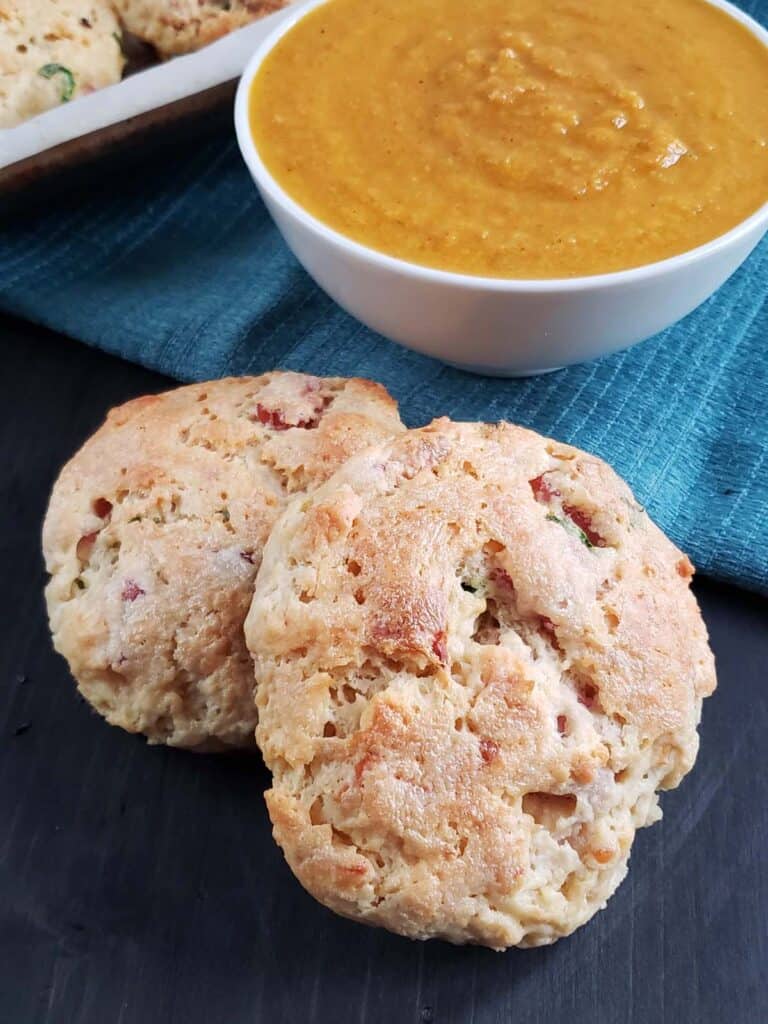
Pair these scones with a cup of coffee or tea, an egg or two, and a bowl of fruit for a delicious breakfast.
Or pair them with a bowl of homemade soup for a savory dinner on a chilly night. Some of my favorites include this Roasted Tomato and Herb Soup, this Creamy Bacon Leek and Potato Soup, or this Roasted Cauliflower Soup.
Jump to:
Why You Will Love This Recipe
- This scone recipe is so easy to customize. Change up the protein and cheese to suit your tastes.
- These Sourdough Cheese Scones are crispy on the outside and soft and tender on the inside.
- Enjoy them for breakfast or pair them with some homemade soup for lunch or dinner.
I've written several recipes for sourdough breakfast treats. Here are a few you should try: Sourdough Dutch Baby, Sourdough Oatmeal Pancakes, Sourdough Discard Banana Bread, Sourdough Discard Waffles and Sourdough Chocolate Banana Bread.
Recipe Ingredients
You will need the following ingredients to make these savory Sourdough Cheese Scones with Ham.
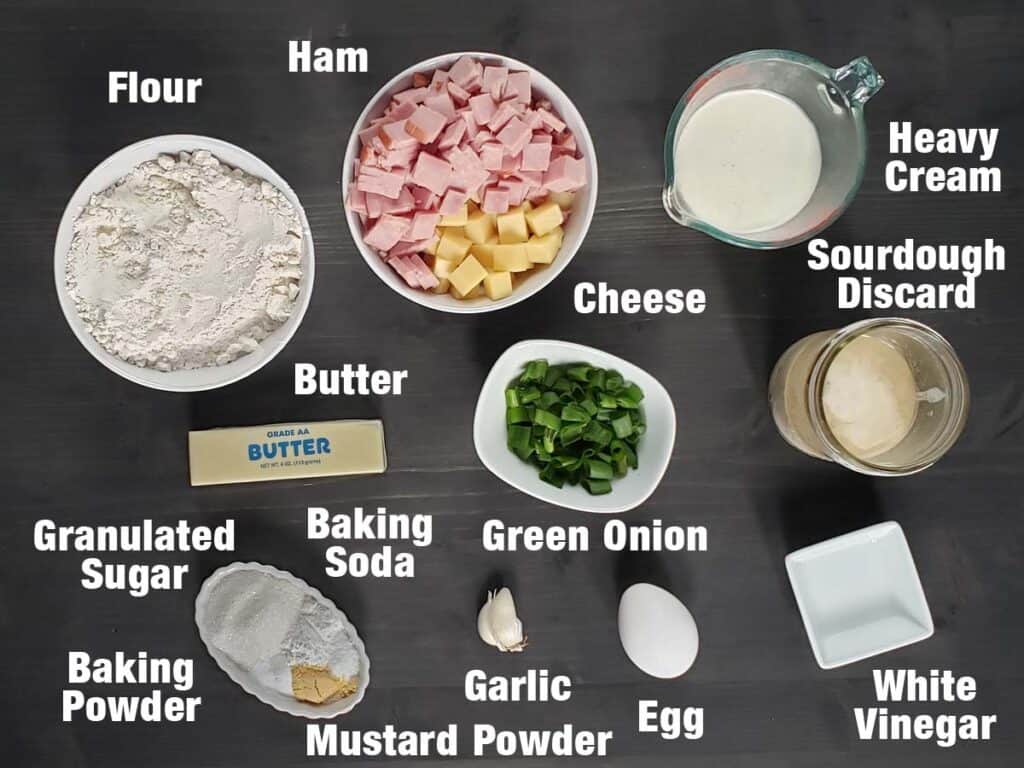
Flour: Nothing special here regular all-purpose flour will work perfectly. For accuracy, the best way to measure the flour is by using a digital kitchen scale.
Tip: If you don't have a digital scale, spoon the flour into the measuring cup and level it with the back of a butter knife. Try not to compress the flour into the measuring cup.
Unsalted Butter: For flaky scones, you will want to make sure the butter is chilled. Keeping the scone dough as cold as possible prevents over-spreading and preserves the scone's flakiness.
Tip: I store extra butter in the freezer at all times. Which means I always have frozen butter ready to be used in scones or pie crusts. Butter can be frozen for up to six months.
Ham: You can use lunch meat or leftover holiday ham. They even sell already cubed ham in most grocery store meat departments. Although you may need to chop it smaller. Crumbled bacon would also be a delicious substitution.
Cheese: Shredded cheese can get lost in a scone. I prefer to use diced cheese in my scones so that there are pockets of melted cheese throughout the scone. There are several types of cheese that would work well. Try using cheddar, Swiss, or gouda.
Green Onions: Green onions offer a sharp crisp contrast to the rich scone.
Sourdough Discard: Different starters can have different consistencies depending upon their age. The viscosity of your sourdough discard will affect how much heavy cream you add.
Pro Sourdough Tip: Keep a glass jar in your refrigerator to store your sourdough discard. Continue adding to it until you have enough to make your chosen sourdough discard recipe.
Heavy Cream: The amount of cream will vary based on how liquid or thick your sourdough starter is. Drizzle in just enough cream until the dough becomes cohesive.
Egg: The addition of an egg is nontraditional. But I think it adds richness and creates a lighter less dense scone. The additional fat will also help stop the scones from drying out.
White Vinegar: Vinegar reacts with the baking soda giving the scones an extra bit of lift.
Salt: I add at least a pinch of salt to all of my recipes. Salt complements and intensifies the other flavors. For all of my recipes, I use Morton Kosher Salt which packs more densely than Diamond Crystal Kosher Salt. If you are using Diamond Crystal Kosher Salt you will want to double the amount of salt you add.
See the recipe card for full information on ingredients and quantities.
Are you new to sourdough? I have plenty of information to help you on your sourdough journey.
Substitutions and Variations
If you don't have a food processor, use a box grater to create small strips of butter that will be easier to cut into the flour with a pastry blender.
If you don’t have any sourdough discard, you can substitute ½ cup of heavy cream and a ½ cup of all purpose flour for the 1 cup of sourdough discard.
If you don't have heavy cream, you can substitute milk or half and half.
Feel free to substitute cooked bacon or sausage for the diced ham.
Step by Step Directions
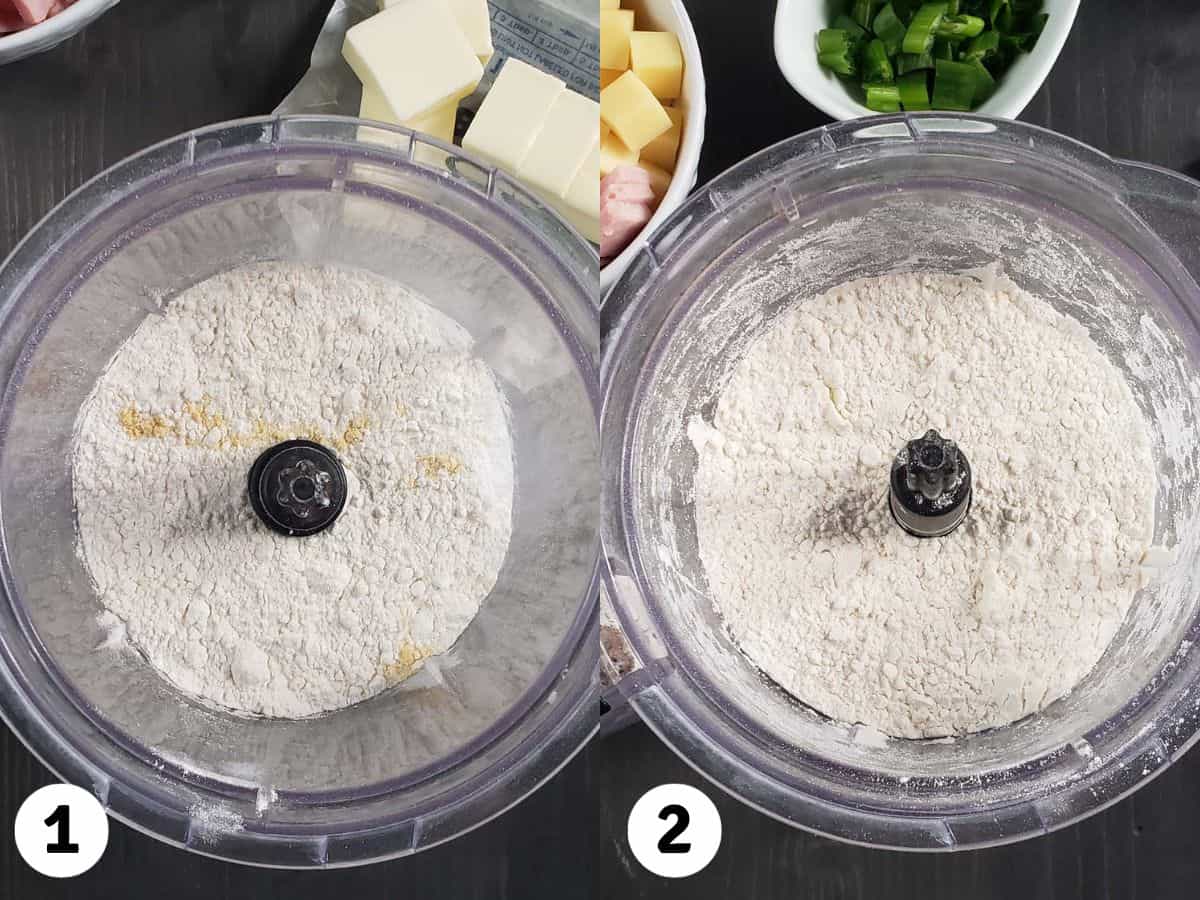
Step 1: Add the flour, granulated sugar, baking powder, kosher salt, baking soda, and mustard powder to the bowl of your food processor. (Photo 1)
Step 2: Cut the butter into 4 pieces and add it to the food processor. Pulse a few times to chop and incorporate the butter into the dry ingredients. Continue processing until the butter pieces are the size of peas. (Photo 2)
Tip: You can also use a pastry blender to cut the butter into the flour mixture.
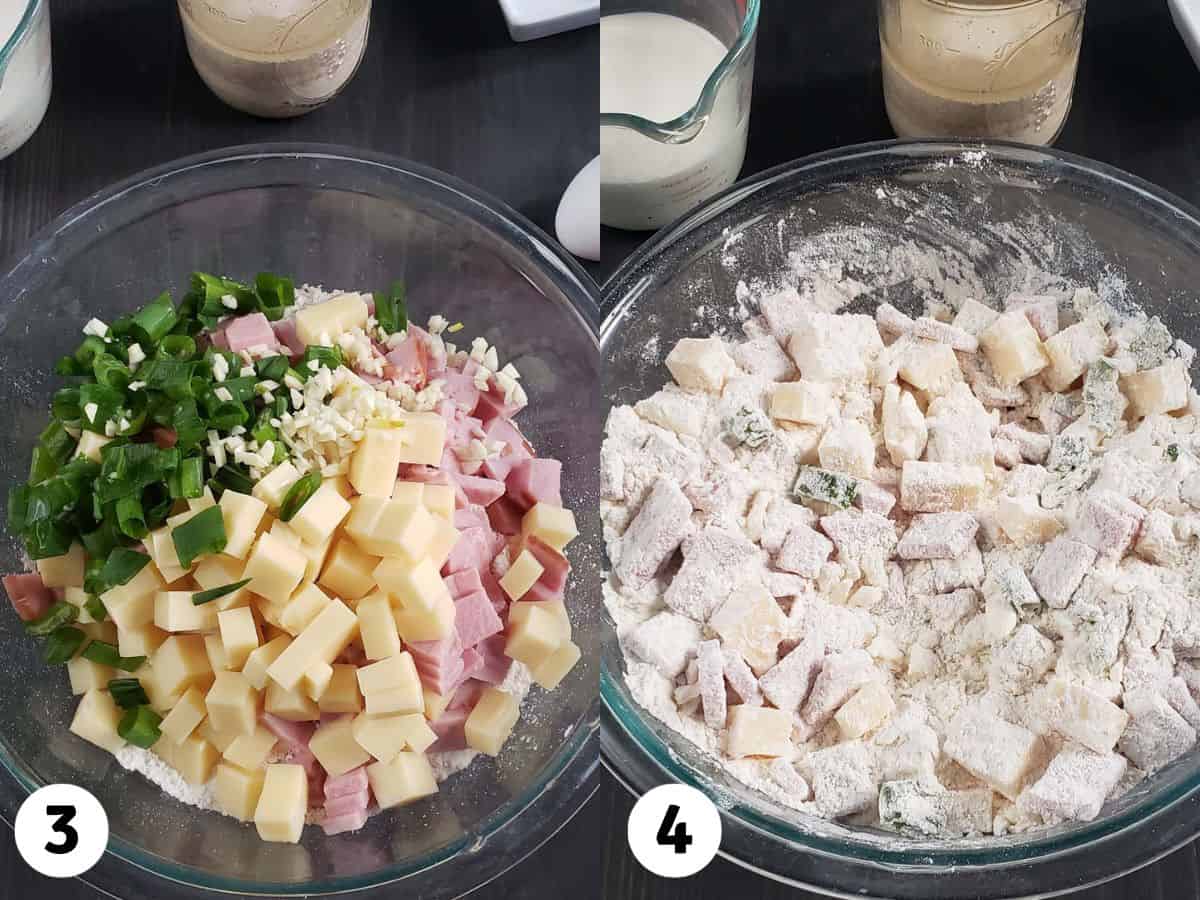
Step 3: Fold the ham, cheese, green onions, and garlic into the dry ingredients. (Photos 3 & 4)
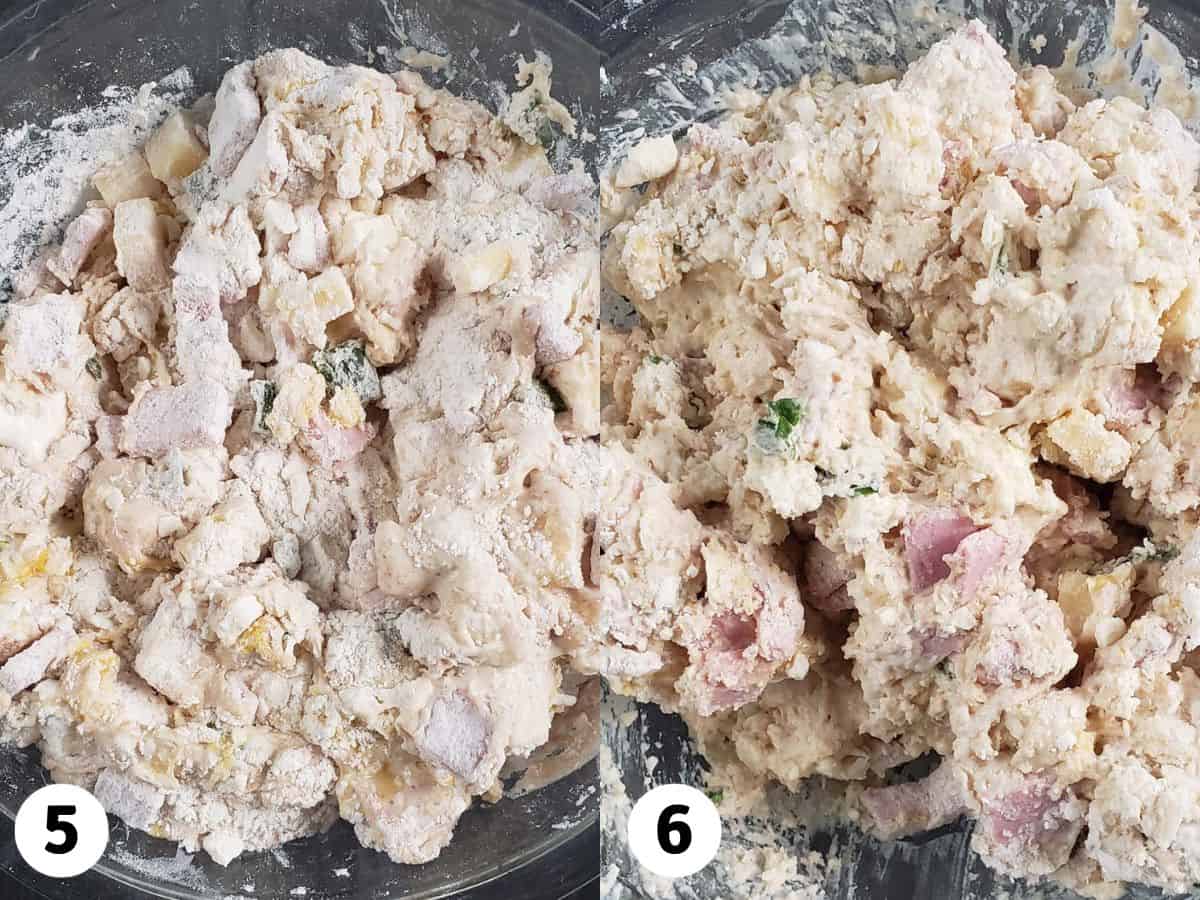
Step 4: Add the sourdough discard, egg, and vinegar to the dry ingredients and stir to combine. (Photo 5)
Step 5: Slowly stir in the heavy cream as you stir the dough together. The amount of cream will vary based on how liquid or thick your sourdough starter is. Drizzle in just enough cream until the dough becomes cohesive. (Photo 6)
Tip: Do not overmix the dough at this point. Overmixing will create tough dry scones.
Tip: Squeeze the dough, when it holds together with no crumbs left in the bottom of the bowl, you've added enough cream.
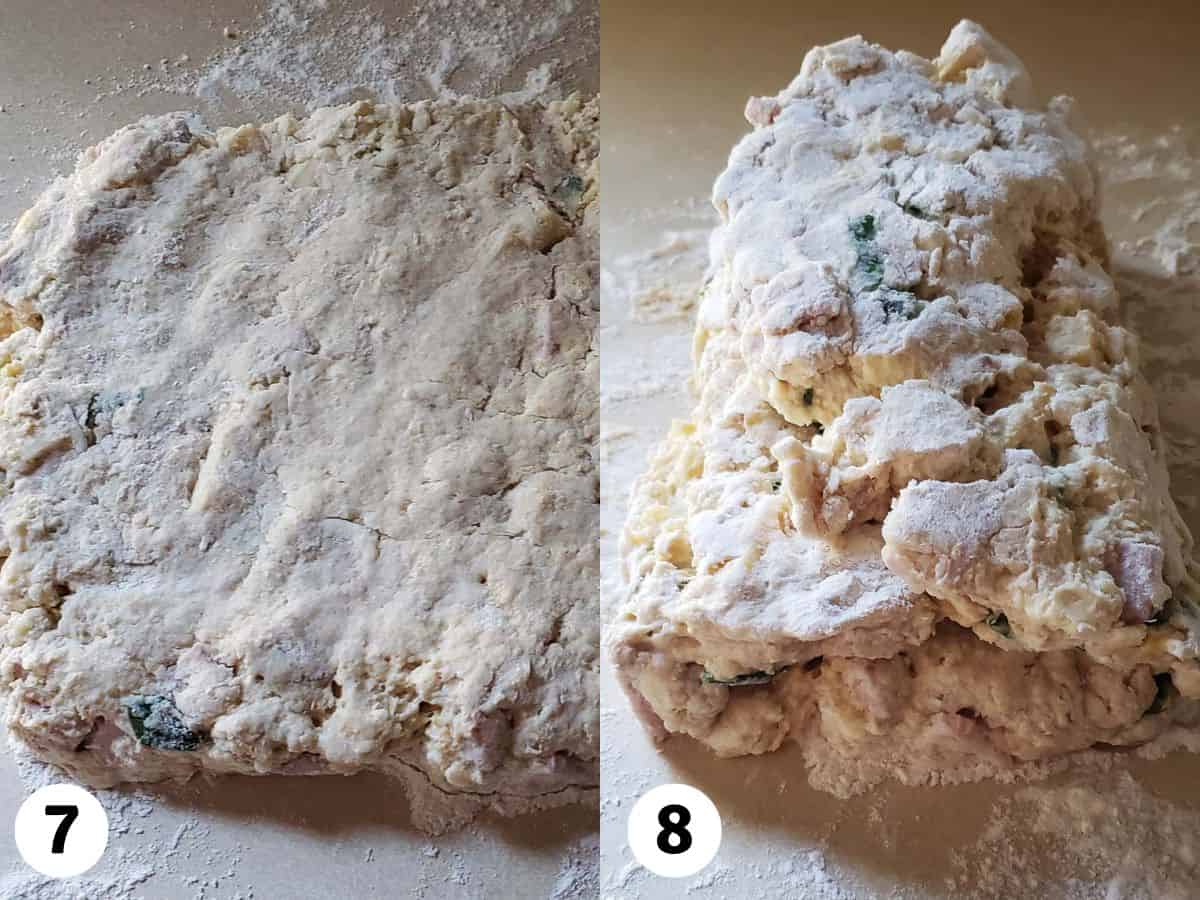
Step 6: Pour the dough onto a lightly floured surface. Knead the dough a few times until it begins to come together. Flatten the dough and fold it into thirds like you would a letter. Give the dough a quarter turn and repeat this flattening and folding process two more times. (Photos 7 & 8)
By folding the dough you will literally be creating layers of flour and butter, creating flakey layers, and encouraging the scones to rise. The dough will be a bit sticky, do not add extra flour. The moist dough gives the scones a soft texture and helps them to rise.
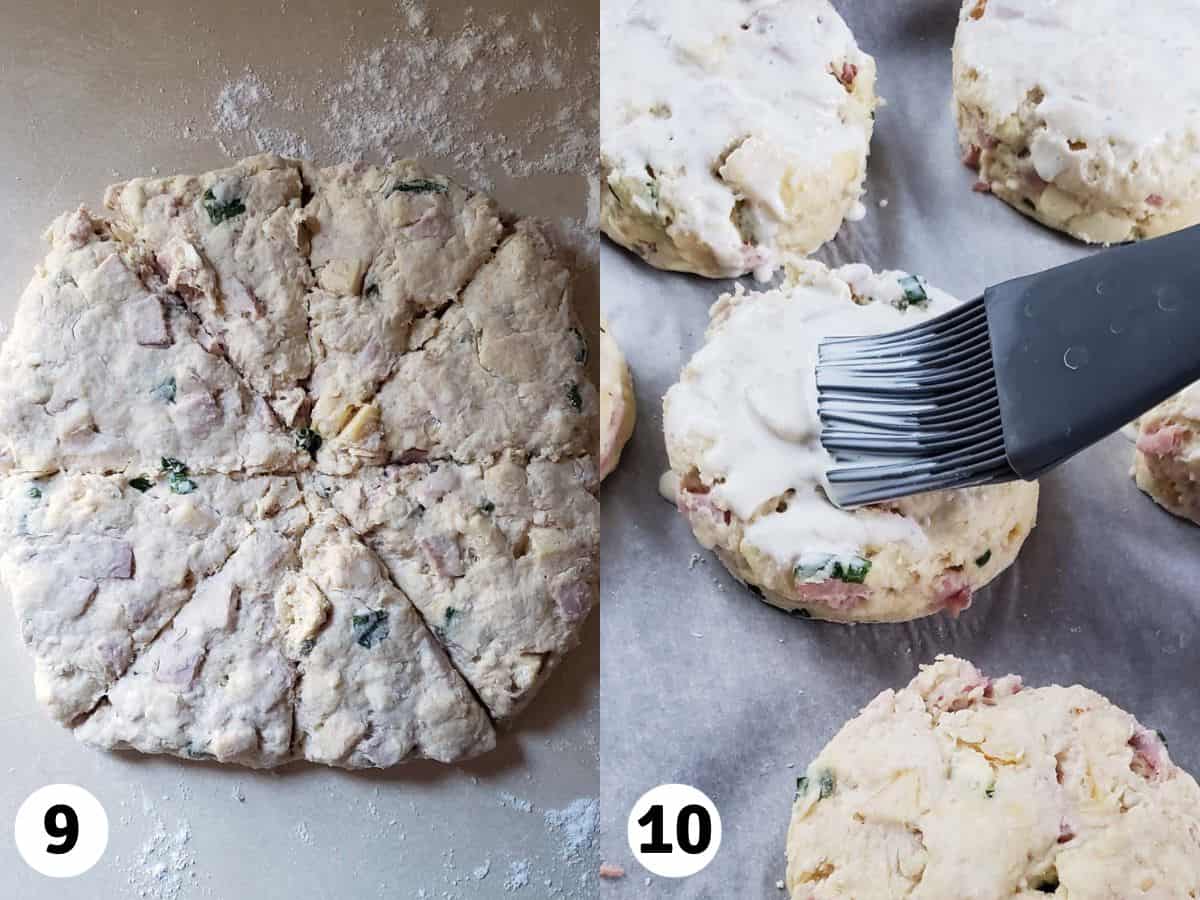
Step 7: Pat the dough into a disc approximately 1 inch thick. (Photo 9)
Step 8: There are two ways you can your dough to make individual scones:
- Use a knife to cut it into eight wedges.
- Use a circle biscuit cutter to cut out about 10 scones.
Tip: Cutting scones into circles looks nicer but you will always have at least one wonky-looking scone that is made by mashing all of the scraps together. Cutting scones into wedges is easier and has the added bonus of not creating any scraps. How you choose to cut your scones is up to you.
Tip: When cutting the scones, push straight down without twisting the cutter. Twisting the cutter seals the edges together and will prevent them from rising.
Step 9: Transfer the scones to a parchment paper-lined baking sheet. To prevent the scones from spreading chill in the refrigerator for 30 minutes.
Step 10: Preheat the oven to 425°F (220°C) and brush tops with heavy cream. Brushing with heavy creams will encourage browning. (Photo 10)
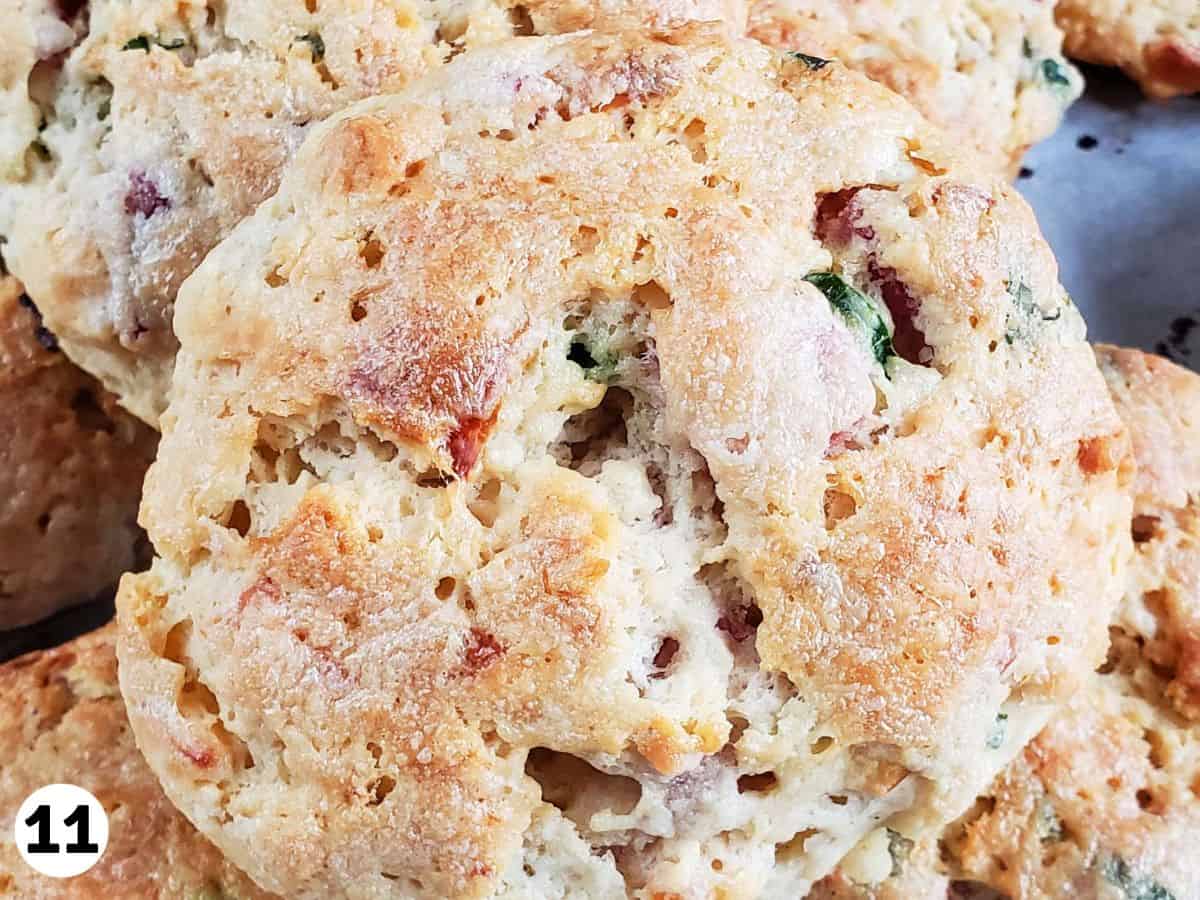
Step 11: Bake for 18-20 minutes. The scones should be golden brown. (Photo 11)
Recipe FAQs
There are a few reasons why your scones may not have risen.
Check your baking powder. For maximum efficacy, the baking powder should be used within six months of opening. To test your baking powder, drop a small amount into hot water. Look for bubbles and fizzing. If a reaction occurs it's still good to use.
Kneading the dough for too long will make them tough, dense, and shorter.
Using too much flour will make the dough too stiff to rise to its full potential. I recommend using a kitchen scale to measure your ingredients by weight rather than volume. Accuracy matters particularly when baking.
Yes, scones can be in advance and frozen either before or after baking. See below for additional instructions on how to make and save scones made in advance.
Scones are best the day they are baked.
Leftover scones can be stored in an air-tight container in the refrigerator for up to four days.
To freeze baked scones, let them cool completely and then wrap tightly in plastic wrap and place in a zip-top bag labeled with the date and contents. Freeze scones for up to 3 months.
Thaw on the counter for a few hours, and then warm in the oven to get the best texture.
To freeze unbaked scones, cut the scones out and arrange them on a baking sheet lined with parchment paper. Freeze them until solid and then transfer them to a zip-top bag labeled with the date and contents. Scones can be frozen for up to 3 months.
To bake frozen scones, bake the scones directly from frozen adding an extra 2-3 minutes of baking time.
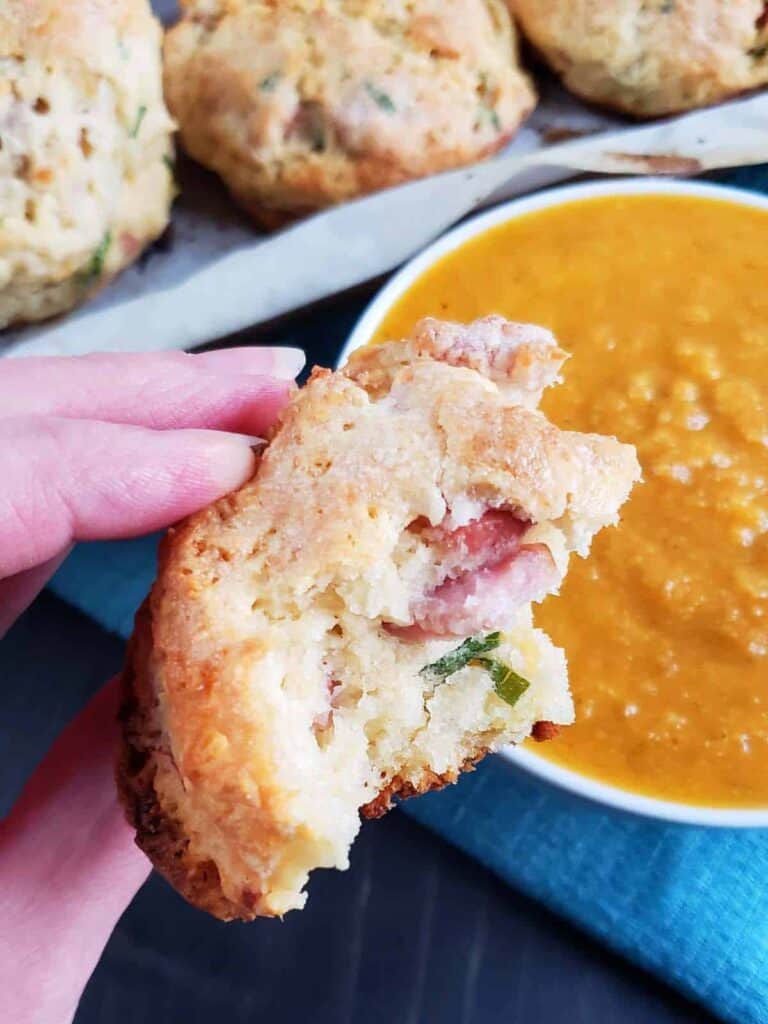
Expert Tips
- A food processor makes blending the butter into the dry ingredients a million times easier. And allows you to work with colder butter without hurting your hands. Try putting the butter in the freezer for an hour before blending it into the dry ingredients. The texture of your scones will be even better.
- If you don't have a food processor, use a box grater to create small strips of butter that will be easier to cut into the flour with a pastry blender.
- If you don’t have any sourdough discard, you can substitute ½ cup of heavy cream and a ½ cup of all-purpose flour for the 1 cup of sourdough discard.
- Don’t overwork the dough. Overworking the dough creates gluten which will result in chewy rather than flaky scones.
- Don't use a rolling pin. Pat the dough out with your hands to avoid overworking the dough.
- When cutting the scones, push straight down without twisting the cutter. Twisting the cutter seals the edges together and will prevent them from rising.
- To help scones keep their shape, chill them in the refrigerator for at least 30 minutes before baking.
- Bake scones on parchment paper or a silicone mat to avoid overcooked bottoms.
- Baking times will vary depending on your oven. It is helpful to know your oven and worth purchasing an inexpensive oven thermometer. Oven temperatures can vary as much as 50 degrees plus or minus.
- If the bottoms of the scones are browning too quickly slide a second baking sheet directly under.
More Scone Recipes
Thanks for Reading!
If you try this recipe, let me know! Leave a comment and rate it below! You can also snap a picture and post it on Facebook or Instagram be sure to tag me @RaspberriesandKohlrabi.
Subscribe to get more recipes and tips by email.
📖 Recipe

Sourdough Cheese Scones with Ham
Equipment
- food processor or pastry blender
- mixing bowl
Ingredients
- 2 ½ cups all-purpose flour
- 1 tablespoon granulated white sugar
- 1 tablespoon baking powder
- 1 teaspoon kosher salt
- ½ teaspoon baking soda
- ½ teaspoon ground mustard powder
- 8 tablespoon unsalted butter chilled
- 1 cup cubed ham
- ½ cup cheese diced
- ½ cup chopped green onions
- 2 cloves of garlic minced
- 1 cup sourdough discard
- 1 large egg
- ½ teaspoon white vinegar
- ⅔ cup heavy cream plus extra for brushing
Instructions
- Add the 2 ½ cups all-purpose flour, 1 tablespoon granulated white sugar, 1 tablespoon baking powder, 1 teaspoon kosher salt, ½ teaspoon baking soda, and ½ teaspoon ground mustard powder to the bowl of your food processor.
- Cut the 8 tablespoon unsalted butter into 4 pieces and add it to the food processor. Pulse a few times to chop and incorporate the butter into the dry ingredients. Continue processing until the butter pieces are the size of peas.
- Fold the 1 cup cubed ham, ½ cup cheese , ½ cup chopped green onions, and 2 cloves of garlic into the dry ingredients.
- Add the 1 cup sourdough discard, 1 large egg, and ½ teaspoon white vinegar to the dry ingredients and stir to combine.
- Slowly stir in the ⅔ cup heavy cream. The amount of cream will vary based on how liquid or thick your sourdough starter is. Drizzle in just enough cream until the dough becomes cohesive.
- Squeeze the dough, when it holds together with no crumbs left in the bottom of the bowl, you've added enough cream.
- Pour the dough onto a lightly floured surface. Knead the dough a few times until it begins to come together. Flatten the dough and fold it into thirds like you would a letter. Give the dough a quarter turn and repeat this flattening and folding process two more times.
- Pat into a disc approximately 1 inch thick and cut into eight wedges using a sharp knife or use a circle biscuit cutter to cut out about 10 scones.
- Transfer the scones to a parchment paper-lined baking sheet. To prevent the scones from spreading chill in the refrigerator for 30 minutes.
- Preheat the oven to 425°F (220°C).
- Brush the scones with heavy cream to encourage browning.
- Bake for 22-25 minutes until golden brown.


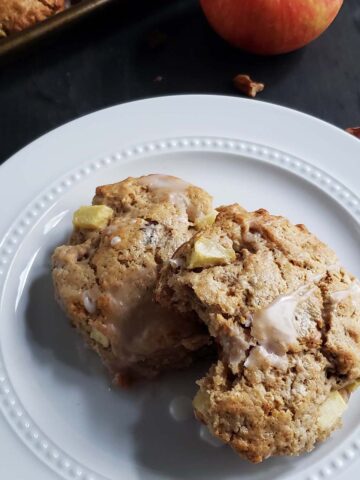
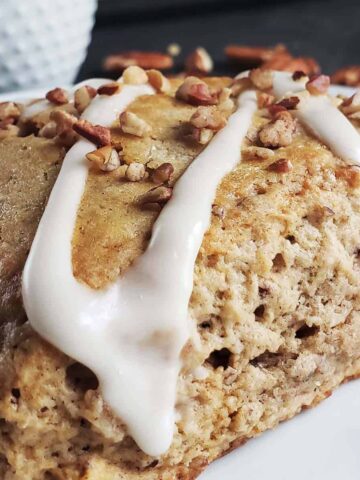
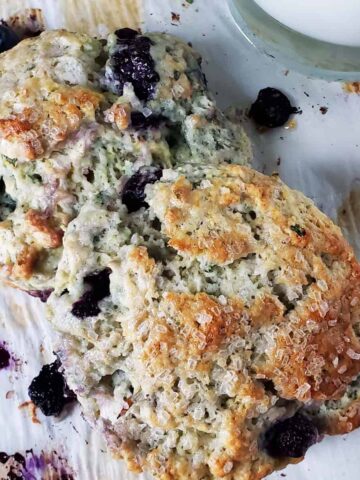
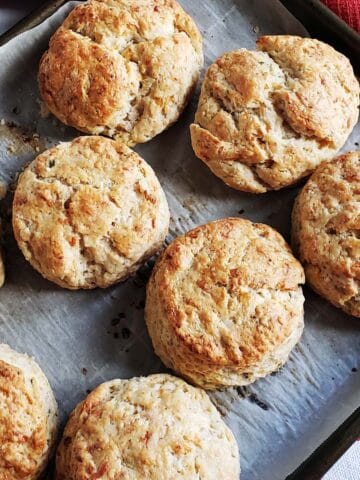
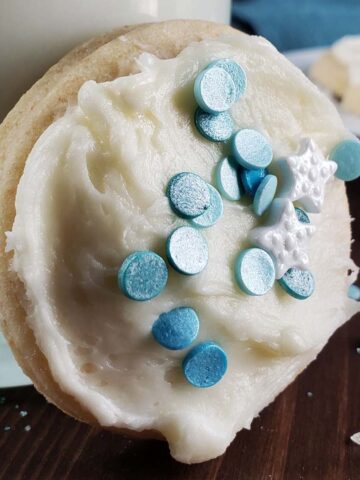
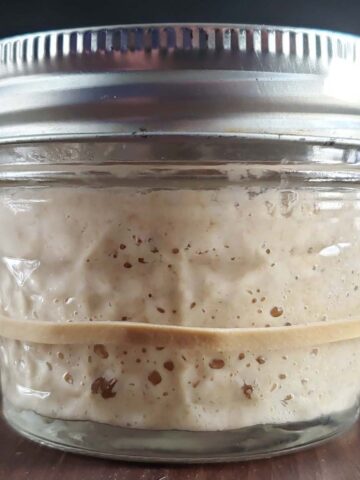
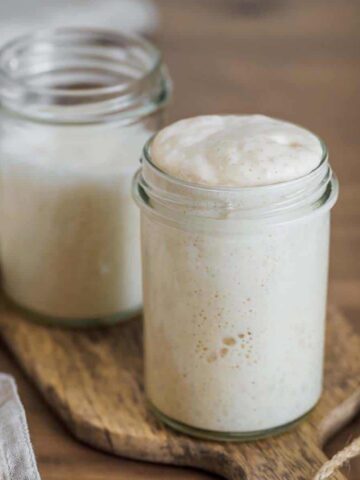
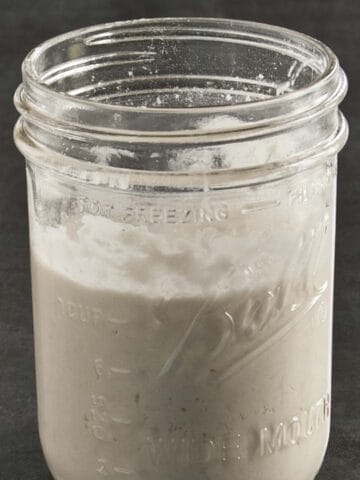
Comments
No Comments